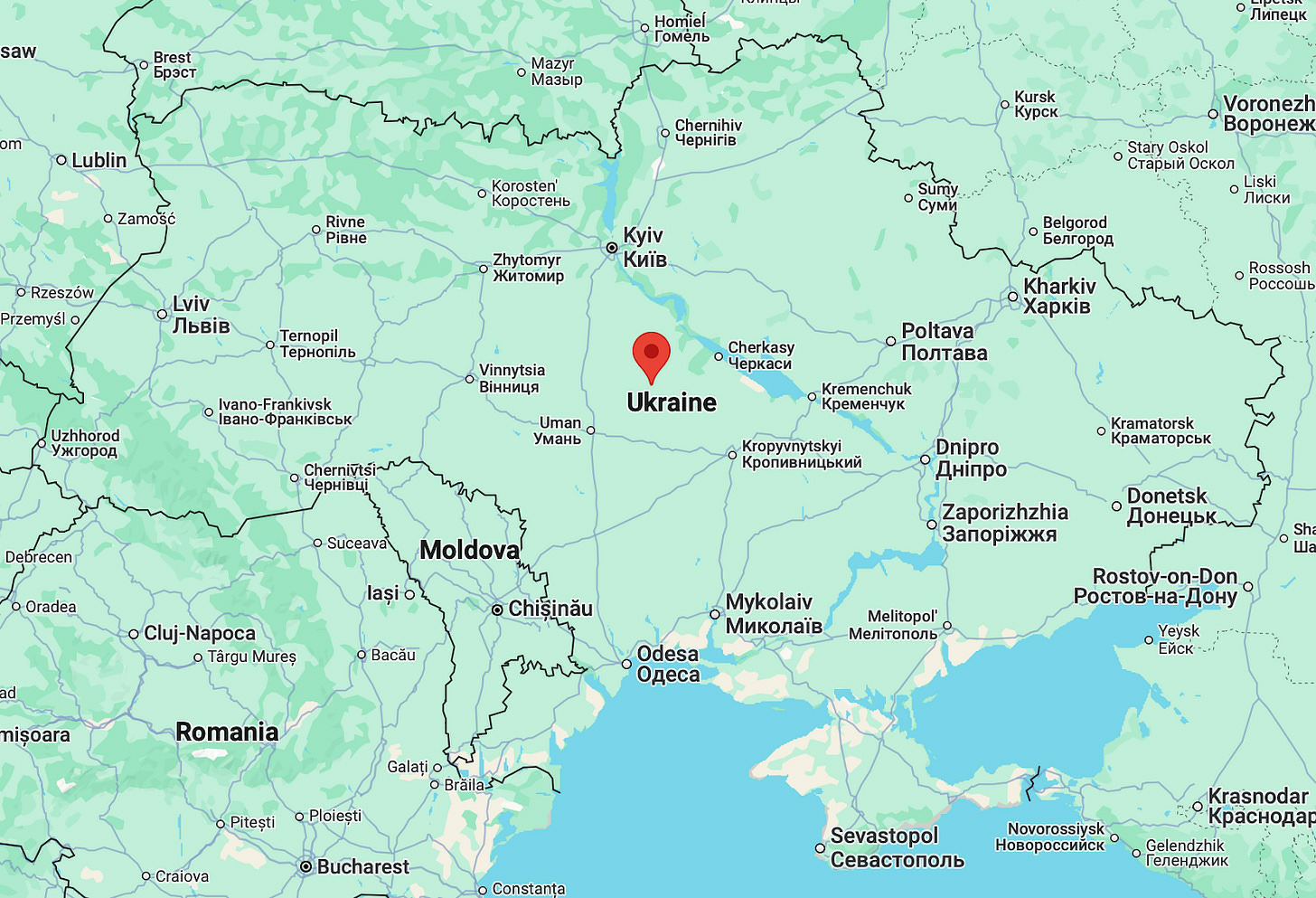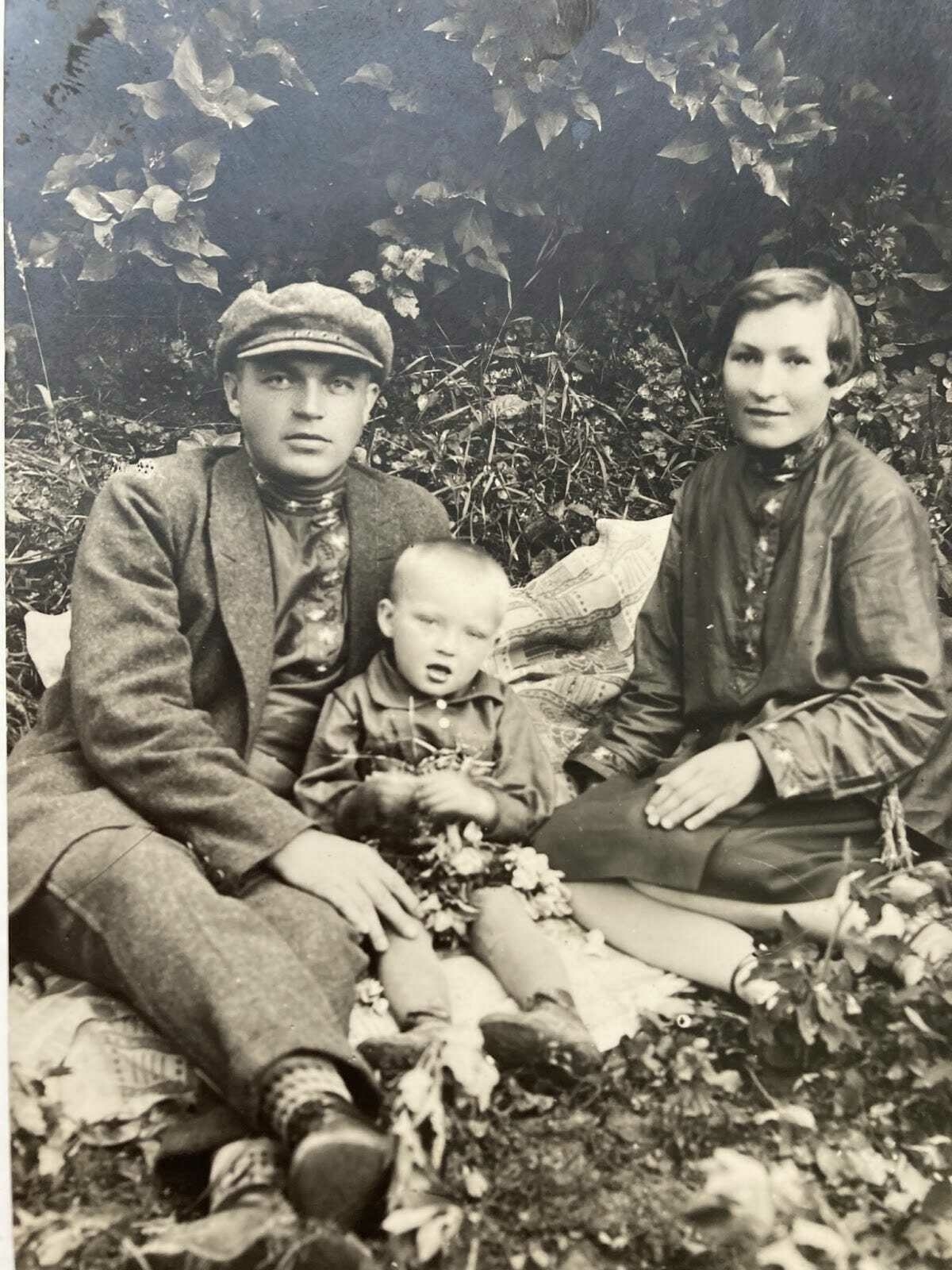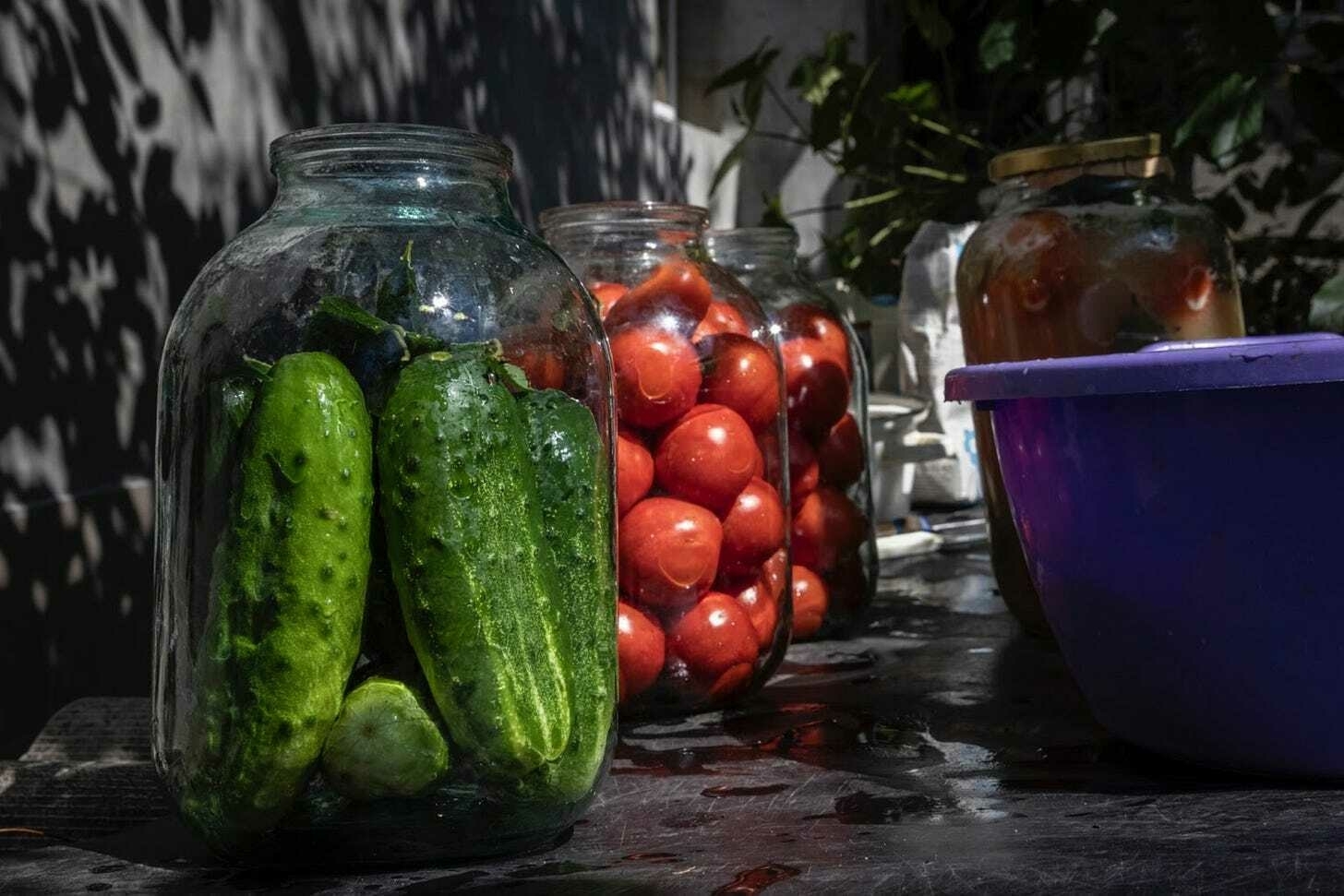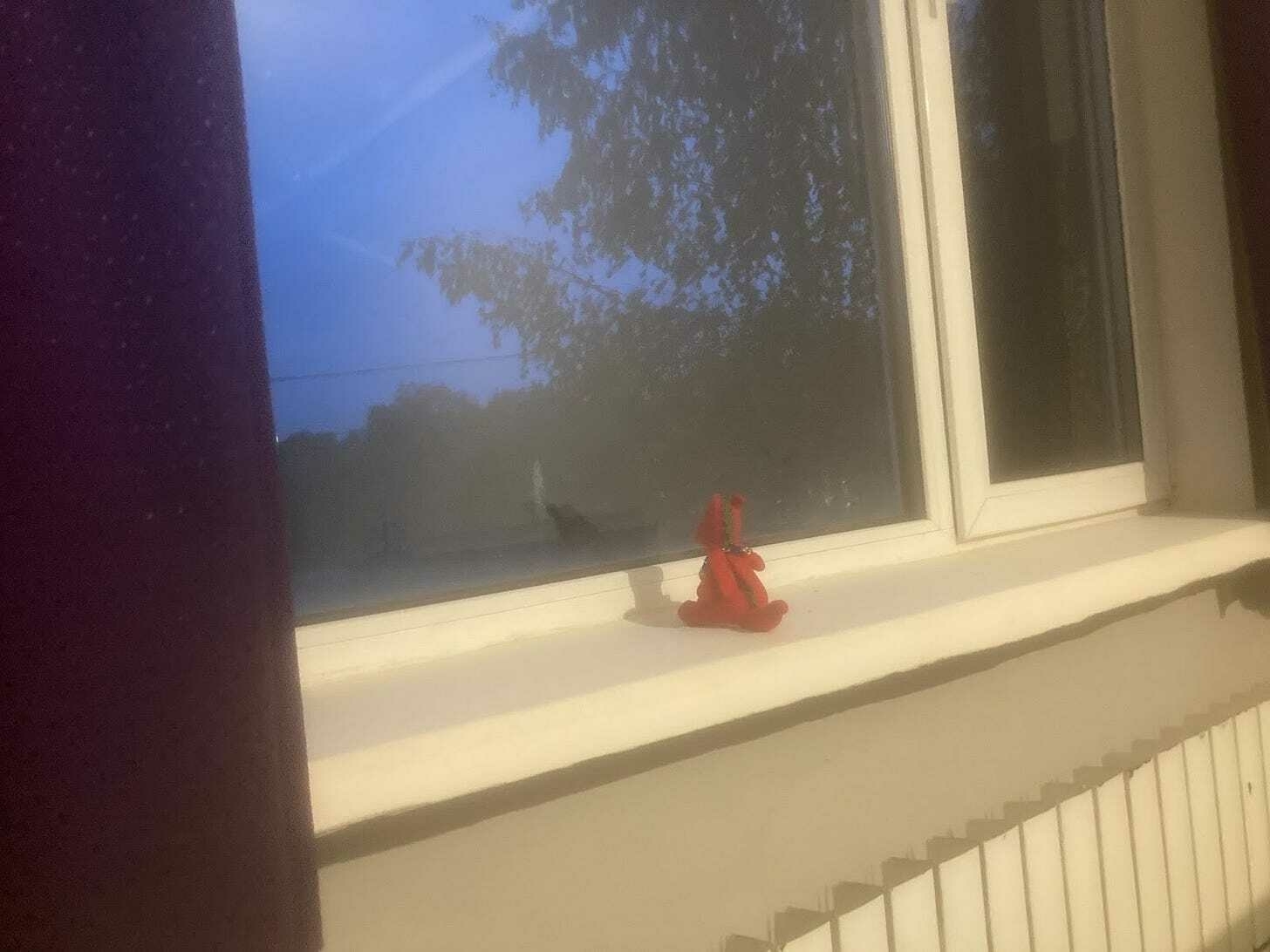Editor’s note: June has historically been our toughest month, where we see a lot of unsubscribes.
Amid the constant attacks in Ukraine, we need your help: will you upgrade to a paid subscription to support our original work now?

“Instinctively, I catch myself on what I've been taught since childhood: that I have to eat up,” said Oles Ilchenko, a Ukrainian writer. “Sometimes I consciously stop.”
The rule of leaving no crumbs after a meal is still engraved in the subconscious of many Ukrainians. It’s just one of the scars still showing after a man-made mass famine in the Soviet Union in early 1930s killed about four million people.
More than 90 years later, the Holodomor remains deeply ingrained in the daily lives of Ukrainians and their meals. The instinct to never waste food – and the quiet joy of a well-stocked pantry – are traditions passed down through generations, as the trauma of starvation lingers in collective memory.
In Ukraine, preserving and rationing food has become a way of life, shaped by the legacy of the Holodomor. The canning and bottling of preserved food in basements was a critical reason why so many Ukrainians survive periods of occupation in the ongoing war.
And the tool of hunger as a weapon of oppression echoes today, as Russia’s military continues to starve Ukrainian prisoners of war.

Oles Ilchenko, 67 years old, is a Ukrainian writer, artist, and teacher at the first Ukrainian school in Geneva, Switzerland. He was born in Kyiv and spent most of his life there.
As a young teenager living in Ukraine, he would hear his family tell vivid stories about their experience during the Holodomor. His mother was reluctant to share, but his grandmother was an open book. Oles’ family lived in Ukraine’s central village of Kerelivka (Shevchenkove), in the Cherkasy region, during the Holodomor.

Oles moved to Switzerland in 2011 due to his wife’s job. Although he’s been away from Ukraine for 14 years, the experiences of his relatives still haunts him.
“I still can't watch them [Europeans] in a restaurant or a cafe, getting up, dropping everything – taking a bite of some cake, not liking it – because they didn’t want to eat it,” he said. “It still somehow doesn't leave me indifferent.”
Now, he tries to stop himself every time the old habits kick in, which can include overeating or feeling guilty over wasting food.
Oles has done everything he could to avoid passing on these traumatic habits to his now 35-year-old son. He claims to have never forced him to finish his meals, which is something his parents would make him do:
“Finish it all, don't leave it, you can't throw it away,” Oles recalled his relatives telling him when he was young. The forced feeding – often an unhappy memory in and of itself, was a reflection of a mentality that it is better to eat now because there may be no food tomorrow.
“[Even when] the child doesn't want to eat anymore, [he was forced] to eat.”
Even today, Ukrainian prisoners of war are tortured with starvation by Russian forces, violating all the norms outlined in Article 26 of the Geneva convention – a chilling echo of the same weapon once used by the Soviets. Many soldiers return exhausted not only from the physical torture they endure, but also from the lack of proper nutrients they receive.
Foreigners visiting Ukraine have been surprised by Ukrainians’ relationship with food.
“One of the things that struck me the most was how people don't waste food, like no one will throw bread away, particularly bread,” said Felicity Spector, a British journalist and author of the book ‘Bread and War’.
For Ukrainians, bread is sacred. It is ‘vsomu holova’ (‘head of everything’), ‘sviatyi’ (‘holy’) and ‘Bozhyi dar’ (‘God’s gift’).
During the famine and the years that followed, when there was nothing sweet to eat, Ukrainians would make bread with butter or honey on top, or simply wet a slice of bread with sugar. If bread becomes stale, it can be made into croutons that can be added to a soup or salad.
Before the Soviet Union, traditional Ukrainian bread was made of sourdough and grain.
The Holodomor was a man-made famine in Soviet Ukraine, caused by Stalin’s policies to suppress anything un-Soviet, targeted Ukrainian farmers through forced collectivization and grain seizures. Millions died in 1932-1933, and the famine is now widely recognized as a delibarate act of genocide intended to break Ukrainian resistance and identity.
On August 7, 1932, the so-called 'Law of Five Ears of Grain’ was adopted, which stated that ‘stealing’ common property, which could even mean picking up grain from the ground, could lead to confiscation of property or even execution.
Amid the new law, people could no longer cook or buy grain bread, as there was a lack of ingredients. Innovative cooks made bread out of peas, corn, acorn shells, or potato scraps.
Oles remembers how the imitation bread of the 60s, bought from the store, “tasted very bad and it was falling apart.”
Even years after the Holodomor ended, bread shortages persisted due the failure of collective farms. Oles’ father once went on a business trip to Leningrad, now known as St. Petersburg, and brought back two highly-coveted loaves of bread as a gift.
“And I remembered those two loaves so much, how we didn't know how to eat them or what to do with them,” Oles said. “And it was 1963, 30 years after the Holodomor. But the memories were so fresh, and everyone was really afraid that it would happen again.”

For grandparents triggered by the horrors of famine, kids are never full.
“Grandparents look and see how thin he [a child] is, ‘we need to feed him more’,” said Vitalii Klymchuk, a Ukrainian therapist and Director at Mental Health. Even doctors sometimes tend to comment on a child’s weight, he said.
During phone calls, the first question from grandparents is usually: “Have you eaten?” or “Are you hungry?” These small details can be traced back to the time when feeding a child meant keeping them alive.
When the Holodomor started, Oles’ grandmother, Mariia Kovalenko, was a young mother. People ate whatever they could find or hide.
“My grandmother told me that they hid a bag of dried cherries in the attic and ate them secretly at night,” Oles said. “And that's how they survived.”
In the 1920s, a grain procurement crisis arose when farmers refused to sell grain at a discounted price to the USSR. Amid the crisis, Soviet leaders imposed the collectivization of the agricultural sector in 1929, forcing people to enroll in ‘kolkhoz’ – collective farms. The policy was aimed at wealthy peasants who disagreed with the grain prices – 113,000 of them were later deported.
Approximately 70 percent of peasant farms were collectivized – roughly half of the population of Ukraine at the time. The Soviet leadership thought the initiative would increase the food supply. But by beginning of 1932, every farmer was experiencing hunger.
“It was insanity, cannibalism, and degradation when they [people during Holodomor] ate roots, leaves, and bark,” Oles said. “This is simply reducing a human being to the level of an animal that only thinks about what to eat, and cannot think of anything else.”
There were more than 2,000 criminal cases of cannibalism during 1932-1933, according to Mykhailo Kostiv, Head of the Department for the Study of Genocide, Crimes Against Humanity and War Crimes.
Oles was shocked by a story his grandfather told. Perhaps it was a rumor, perhaps it was true. But it showed the sort of lives these people lived: A woman became so desperate that she killed a child and boiled it. She was shot on the spot by authorities.
Such horrors transformed food from a mere substance to something to be coveted and preserved. Ukrainians have long found ways to reuse spoiled food instead of discarding it. If milk starts to sour, for example, they can make other dairy products, such as kefir (a thin yoghurt) and cheese.

“It becomes clear why all families, Ukrainian ones, had such fantastic winter preparations,” Oles said, adding that they all kept jars of pickles, fermented foods, jam, and jelly in storage. “And these jars were in incredible numbers, you couldn't eat them all.”
Oles’ grandmother even stored jars filled with every “imaginable and unimaginable” type of fruit for years. Nowadays, even with access to supermarkets, Ukrainians continue to store food this way. The majority of Ukrainians living in villages, in houses with cellars, use this method to prepare for winter.
A Ukrainian family that Oles knows, who has lived in Geneva for the past 20 years, also stores food in preparation for winter.
Dried cherries are one of the reasons why Oles’ family survived during the Holodomor — a habit many Ukrainians have continued to use since. They gather vegetables and plants during the spring and summer, and freeze or dry them to store for the winter.

Ukraine harvests approximately 18 tons of potatoes annually, with only two percent of these being produced by commercial and private enterprises. One-third of it is stored in the cellars of Ukrainians, and often goes uneaten for years.
During the winter months of the Holodomor, children would gather potatoes, both frozen and rotten, that were left over from the harvest, and their families would cook surrogate food – food substitutes made from non-traditional or inedible ingredients – with them. For example, traditional pancakes were made of potato starch or peels.
“I remember this old tradition of my grandmother and her two brothers, when other people would come – I was just amazed at how much food they cooked,” Oles said. “There were mostly borscht, sometimes soup, always two meat dishes, salads, and at least two cakes.”
At a certain point, amid the food shortages, Ukrainians began to prioritize the nutritional value of each meal. In 1939, the book ‘On Tasty and Healthy Food’ was published. The purpose was to educate people about the nutritional value of products, its calorie content, and cost.
As a result, Soviet dishes, such as Olivier and crab salad, began to gain popularity. The salads contained boiled eggs, potatoes, vegetables, rice, mayonnaise, and sausages — cheaper and of lower quality than meat.
Even 90 years later, some descendants of Holodomor survivors are developing eating disorders amid the fears and misconceptions imposed on them.
Other Ukrainians with ancestors who survived the famine have a higher risk of developing type 2 diabetes. Examining more than 10 million Ukrainians born in the 1930s, a scientific study found that exposure to famine during early childhood more than doubled the chances for developing type 2 diabetes in later life.
To this day, some people still struggle to discuss the famine.
“I know that in many families they did not want to or did not like to remember these events,” Oles said. “My mother did not like it either. But my grandmother did not hide it.”
It takes a great deal of self-reflection to see how context becomes character.
But for every preserved jar still sitting in dark Ukrainian cellars, for every piece of stale bread carefully repurposed for later, is a story of survival.
NEWS OF THE DAY:
Good morning to readers; Kyiv remains in Ukrainian hands.
U.S. MAY SEND UKRAINIANS TO GITMO: This week, the U.S. may begin relocating thousands of foreigners who are staying in the country illegally, The Washington Post reported.
They will likely be sent to the U.S. military base in Guantanamo, Cuba. Among them are citizens of allied countries such as Ukraine, the U.K., Italy, France, Germany and Belgium
The Trump administration is unlikely to inform the allied governments before this sort of forced relocation. Guantanamo Bay is known as a prison for terrorism suspects and others captured after the events of 9/11. In January, Trump stated that he would move up to 30,000 migrants there.
‘OPERATION SPIDER WEB’ CARRIED OUT WITH UNIQUE DRONES: SBU engineers developed unique drones specifically for ‘Operation Spiderweb,’ Babel reported. Operators could remotely control the drones in real time from thousands of kilometers away from Ukraine’s state border, as well as bypass Russian air defense systems.
According to SBU claims, these drones were able to strike approximately 34% of Russia’s strategic aviation, thereby weakening Russia’s capacity to deliver massive strikes on Ukrainian cities.
RUSSIAN SPY DETAINED IN POLAND: A Polish citizen has been arrested on suspicion of spying for Russia, the Polish prosecutor’s office reported.
He had been transmitting information to Russian intelligence services from February 2024 to April 2025. This included data on infrastructure critical to Poland’s defense. The disclosure of this information allegedly posed a serious threat to the country’s national security.
This is not the first time Russian spies have been exposed in Poland. They have reportedly been carrying out sabotage attacks on Polish territory, directed by Minsk and Moscow.
DRAKONCHIK OF WAR:
Today we have a drakonchik of war (a diminutive of ‘dragon’ in Ukrainian) from our reader Anna Bowles!
Whenever she comes to Ukraine, he sits on the windowsill, ready to spit fire at any drones or missiles that might dare to approach the building.
Stay safe out there.
Best,
Tim





